17 巻, 3 号
選択された号の論文の9件中1~9を表示しています
- |<
- <
- 1
- >
- >|
-
1994 年 17 巻 3 号 p. 149-155
発行日: 1994年
公開日: 2006/08/10
PDF形式でダウンロード (1482K) -
1994 年 17 巻 3 号 p. 157-160
発行日: 1994年
公開日: 2006/08/10
PDF形式でダウンロード (775K) -
1994 年 17 巻 3 号 p. 161-163
発行日: 1994年
公開日: 2006/08/10
PDF形式でダウンロード (502K) -
1994 年 17 巻 3 号 p. 165-171
発行日: 1994年
公開日: 2006/08/10
PDF形式でダウンロード (1229K) -
1994 年 17 巻 3 号 p. 173-178
発行日: 1994年
公開日: 2006/08/10
PDF形式でダウンロード (1153K) -
1994 年 17 巻 3 号 p. 179-186
発行日: 1994年
公開日: 2006/08/10
PDF形式でダウンロード (1211K) -
1994 年 17 巻 3 号 p. 187-192
発行日: 1994年
公開日: 2006/08/10
PDF形式でダウンロード (932K) -
1994 年 17 巻 3 号 p. 193-197
発行日: 1994年
公開日: 2006/08/10
PDF形式でダウンロード (923K) -
1994 年 17 巻 3 号 p. 199-203
発行日: 1994年
公開日: 2006/08/10
PDF形式でダウンロード (799K)
- |<
- <
- 1
- >
- >|
